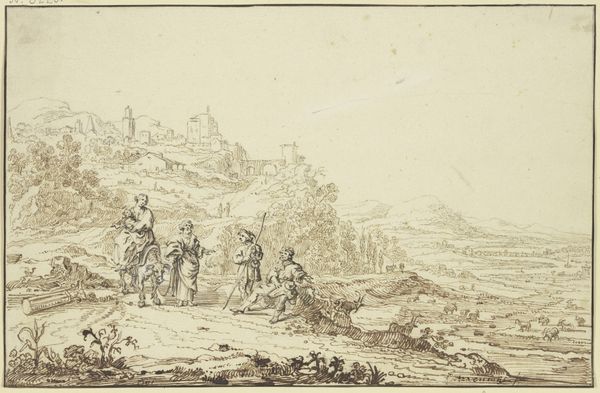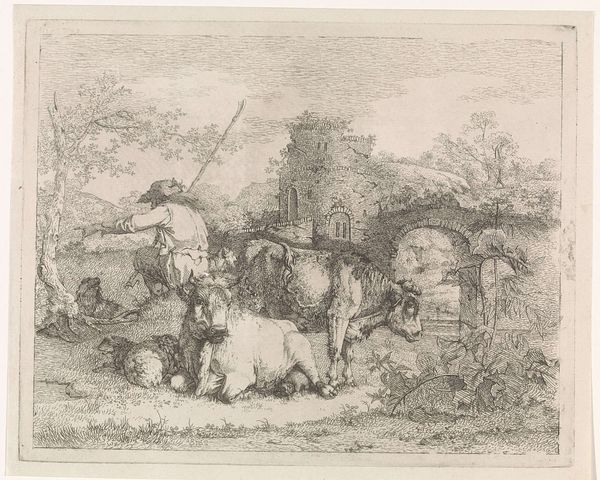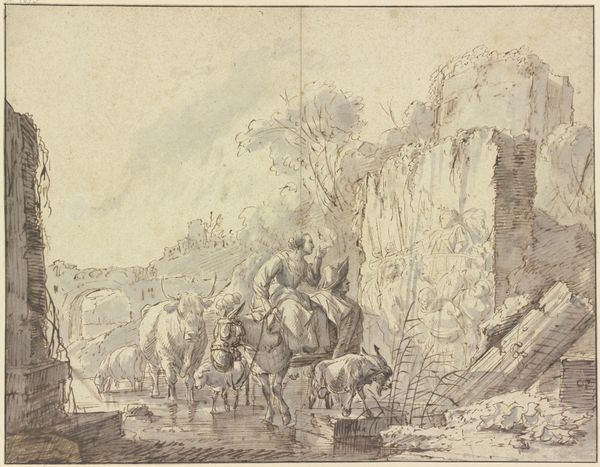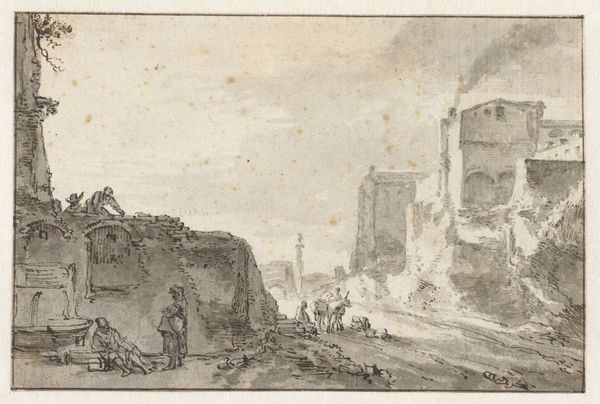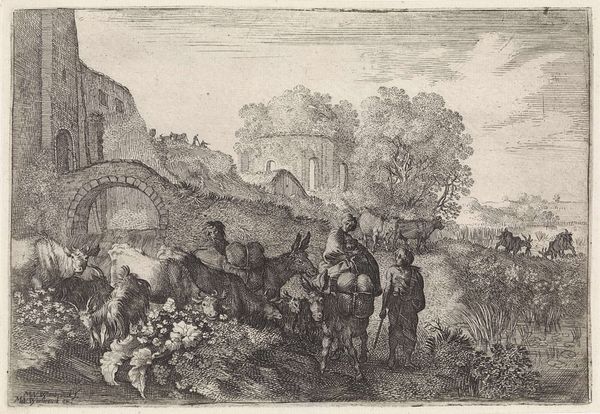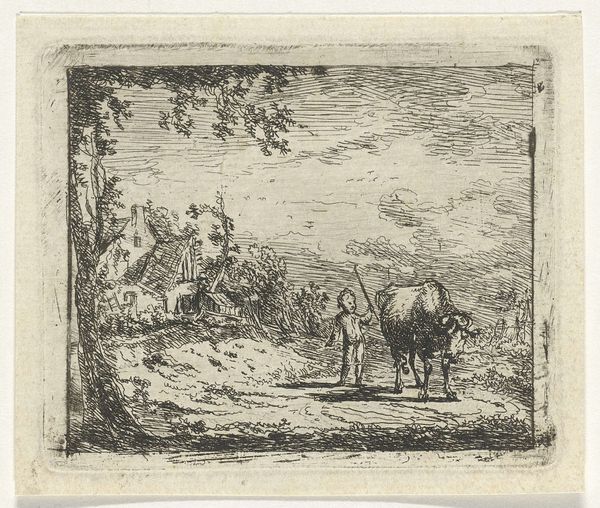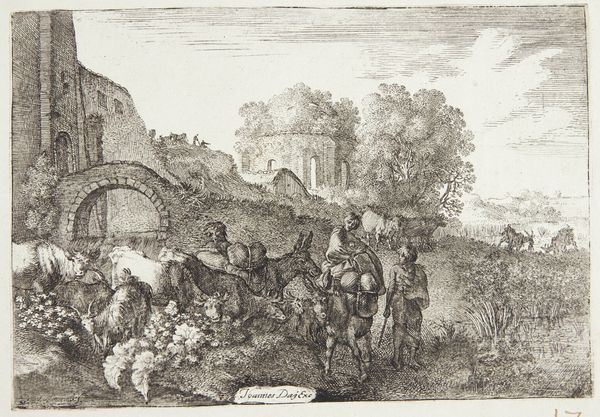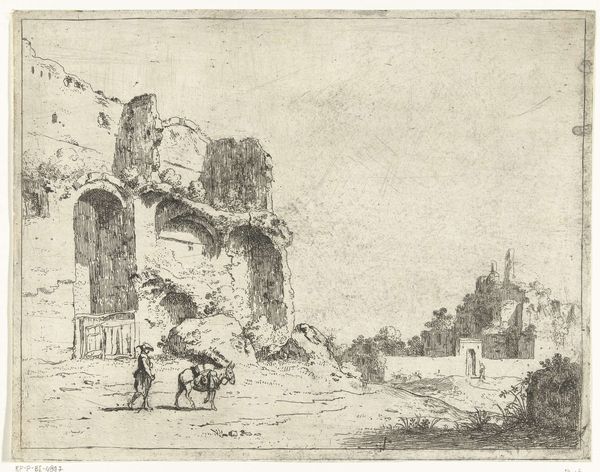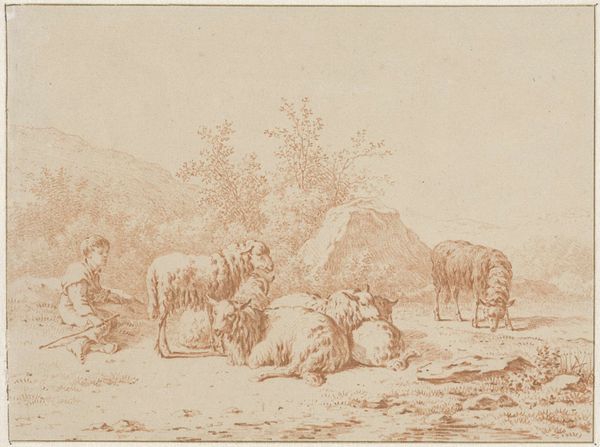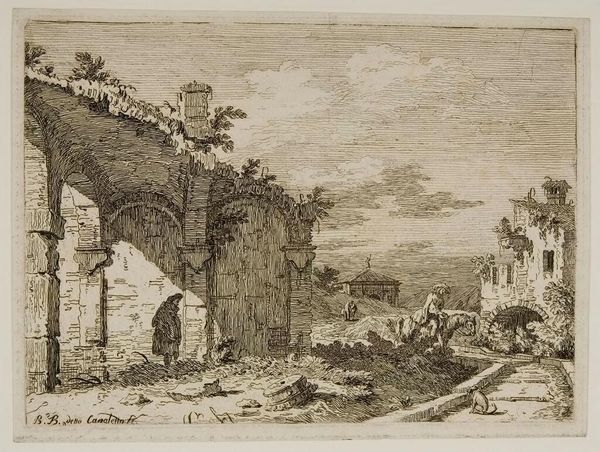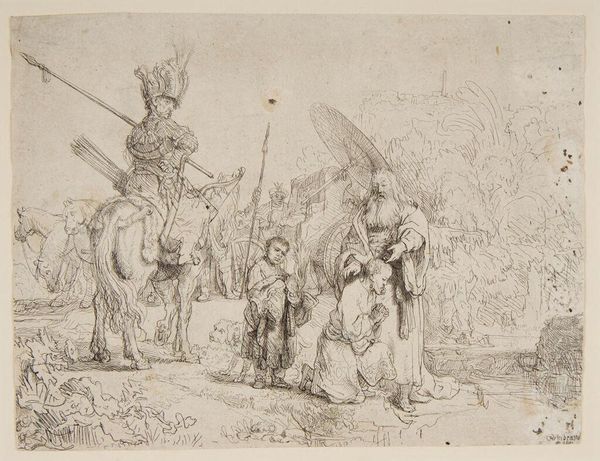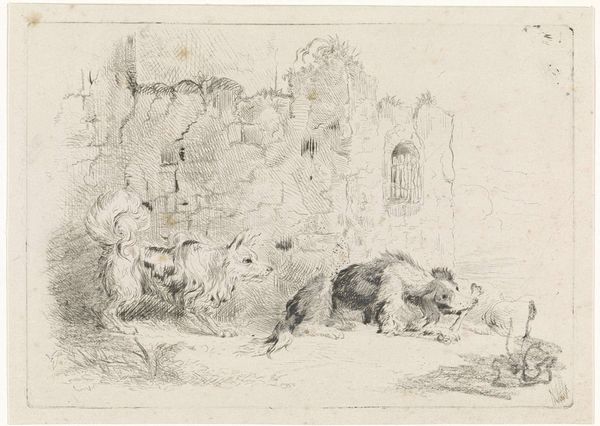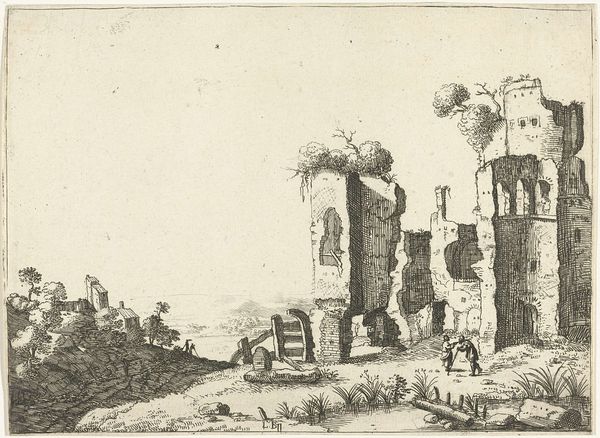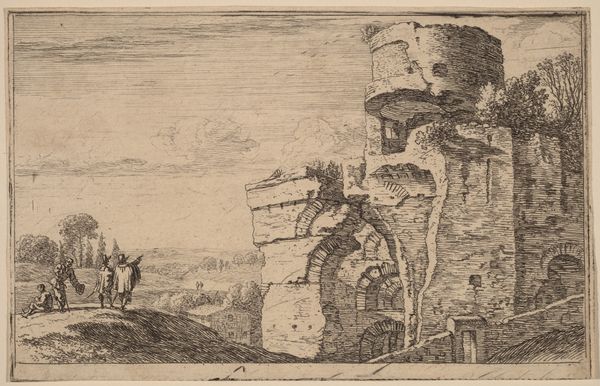
drawing, ink
#
drawing
#
baroque
#
pencil sketch
#
landscape
#
ink
#
genre-painting
Dimensions: height 192 mm, width 264 mm
Copyright: Rijks Museum: Open Domain
Editor: This drawing, "Two Herders Driving their Cattle through a River" by Johann Heinrich Roos, created sometime between 1641 and 1685, uses ink and pencil to depict a pastoral scene. It's a peaceful image, but the ruined architecture in the background gives it a melancholy feeling. What do you see in this piece beyond the surface-level imagery? Curator: It's crucial to recognize the context in which Roos was working. Genre paintings like this, seemingly simple scenes of everyday life, were often laden with ideological weight. This seemingly idyllic depiction masks complex social and economic realities. How do you think the artist’s depiction of labor relates to the socio-political dynamics of the time? Editor: That's interesting, I hadn’t considered that. I just saw it as a quaint portrayal of rural life. Maybe there's a commentary here on the changing role of the peasantry or an idealization of a vanishing way of life? Curator: Exactly. Roos was working in a time of shifting power structures and economic upheaval. His focus on the "genre painting," which features the peasant class is particularly interesting because these subjects were considered a lower status during the Baroque period. In this work, nature appears intertwined with this representation, which then brings up ecological and classist questions on power. What do you see now when looking at the ruined structure? Does the romantic depiction veil social commentary? Editor: I now notice how much emphasis the artist has given it and also see that structure as more than mere background. The herders and the animals seem dwarfed in its presence. The contrast now evokes a sense of lost glory or a commentary on time's relentless march, perhaps even social decay hidden within natural simplicity. I appreciate learning more about historical context! Curator: And I've valued seeing your perspective as a student engaging with the piece today. These dialogues help bridge the gap between historical analysis and contemporary interpretation, revealing new layers of meaning.
Comments
No comments
Be the first to comment and join the conversation on the ultimate creative platform.
